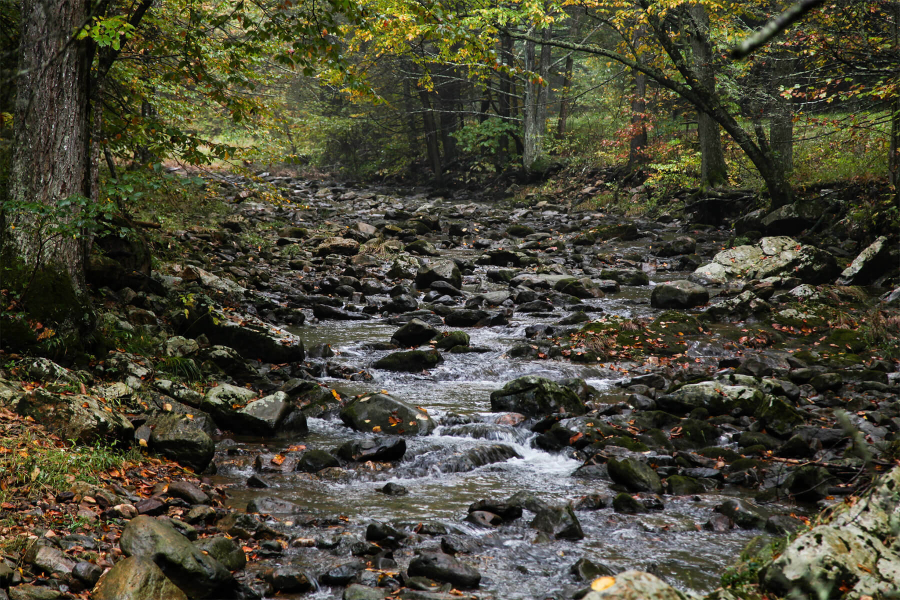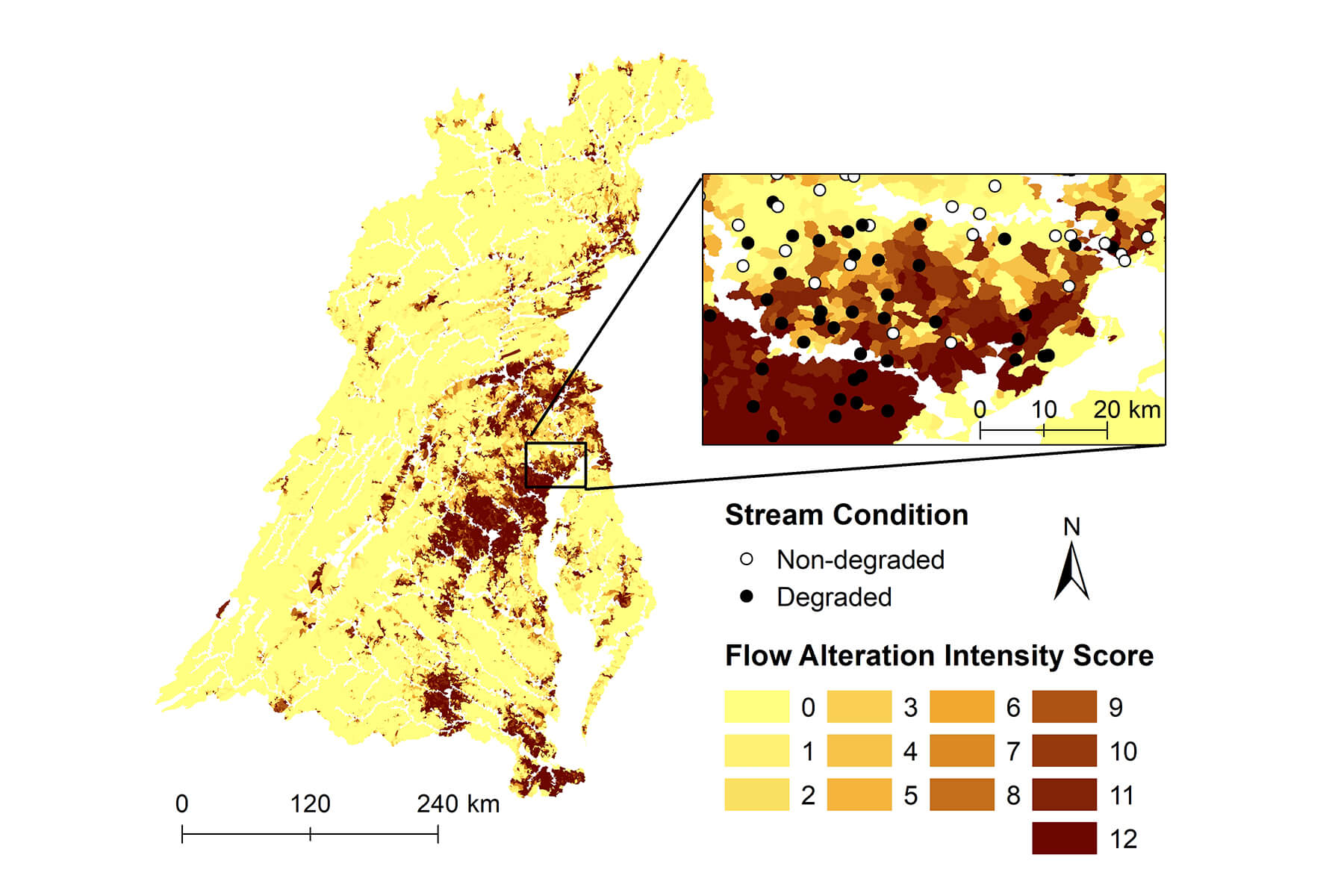Chesapeake Bay researchers go with the flow

If you were an organism looking for a small stream to live in, there are a few conditions you might want to consider. Is there access to food? Is there an abundance of oxygen? Does enough sunlight reach the plants?
Yet another condition to consider during your home inspection is the amount of water flowing into a river and how fast or slow it’s moving—also known as stream flow.
A natural stream flow is one of the primary habitat conditions needed for healthy biological communities (e.g., fish, plants and benthic organisms like clams and worms) in streams. But human activities have drastically altered the natural flow of most of the world’s rivers and streams, including those in the Chesapeake watershed. Flow can slow down when dams and reservoirs are constructed or if water is diverted or withdrawn due to development. On the other side, severe storms, particularly in areas with lots of impervious surfaces, can speed up water flow.
When stream flow is diminished, or lessened, nitrogen and phosphorus are not dispersed as well, building up in greater quantities in some areas. Additionally, oxygen can be reduced and the entire waterway can dry up. If stream flow is inflated, or increased, it can cause plant life to die off, fish eggs to wash away and excess sediment to block sunlight from reaching plants.
All of this spells trouble for the collective Chesapeake watershed, which is made up of over 100,000 smaller tributaries that all drain into one place—the Bay.
Studying stream flow alteration in the watershed
Working through the Chesapeake Bay Program’s Stream Health Workgroup, a group of researchers at the United States Geological Survey (USGS) and the Interstate Commission on the Potomac River Basin recently studied how altered flows affect the biological health of small streams in the Chesapeake Bay watershed.
The group used an index of benthic macroinvertebrate life in the watershed that classifies stream health as poor, fair or good, and then matched this up with the predicated alteration in a stream’s flow. To determine the flow alteration, the USGS looked at metrics such as flow duration, frequency and magnitude. A computer model was developed to predict what these metrics would be in a natural, undisturbed watersheds and compare them to conditions in watersheds with known human influences on stream flow—thereby establishing a baseline of what the flow should be vs. what it is now.
The team produced a map of the Chesapeake Bay watershed that shows the “flow alteration intensity” on a scale from 1-12, with 12 indicating the highest level of degraded health due to stream flow alterations.

Study Findings
Researchers found that degraded conditions were roughly 3.8-4.7 times more likely in streams where flow was predicted to be altered than in streams where it was not.
When looking at streams in urban vs. rural areas, researchers found that most of the sites with high flow alteration intensity scores are within urban areas. The likelihood of a degraded stream condition in an urban setting was almost twice as high (8.7-10.8); however, the impact of flow alteration was not significant among sites within agricultural watersheds. This is likely due to the fact that urban areas have a lot of impervious surfaces—such as pavement and concrete. These surfaces don’t absorb stormwater as well as trees, grass and other vegetation, so waterways are inundated with sudden, heavy flows.
Investigators also tested streams with various stressors on stream flow, such as reservoir storage, urban development and freshwater withdrawal. They found that with each new stressor considered, stream health worsened. A measurement unit to reflect the number of stream flow components altered by those stressors was developed, and it was found that with each one of these unit increases, the probability of degraded stream conditions increased 3.7%.
Management applications
Accurate predictions on where stream flow alteration is occurring and how it is impacting stream health could help prioritize management practices and more effectively apply restoration efforts across the watershed.
In areas with a higher flow alteration score, managers could consider actions targeted to mitigate altered flows, like removing dams or replacing impervious surfaces. Managers could also target where the effect of flow alteration is less severe (lighter colors in figure 1) since they are closer to being healthy.
The study can also help managers rule out stream flow as a stream health stressor. In waterways where degraded conditions exist but are not due to altered flow (areas with zero flow alterations scores and degraded biological conditions in figure 1) groups can prescribe management practices aimed at other stressors (e.g., increased sediment, toxic contaminants).
Painting a comprehensive picture of stream health
This study is part of a larger endeavor to better understand the factors impacting stream health in the watershed, including altered flows, to help identify potential places and management actions to improve their condition. Other stressors being studied by the Stream Health Workgroup include toxic contaminants, salinity and sediment, as well as specific stressors in urban and agricultural areas.

Comments
There are no comments.
Thank you!
Your comment has been received. Before it can be published, the comment will be reviewed by our team to ensure it adheres with our rules of engagement.
Back to recent stories